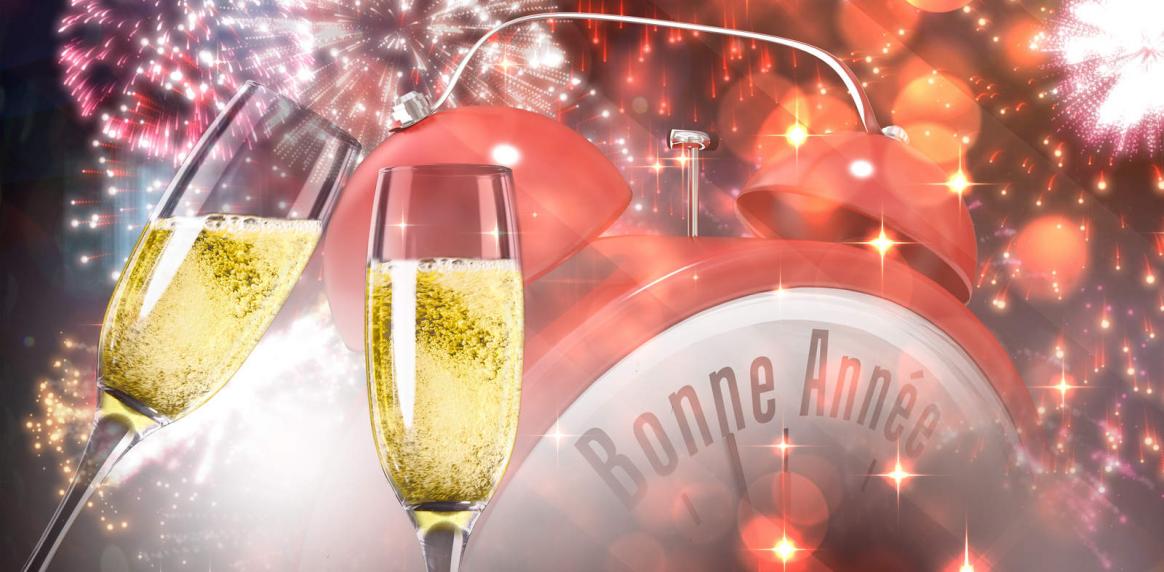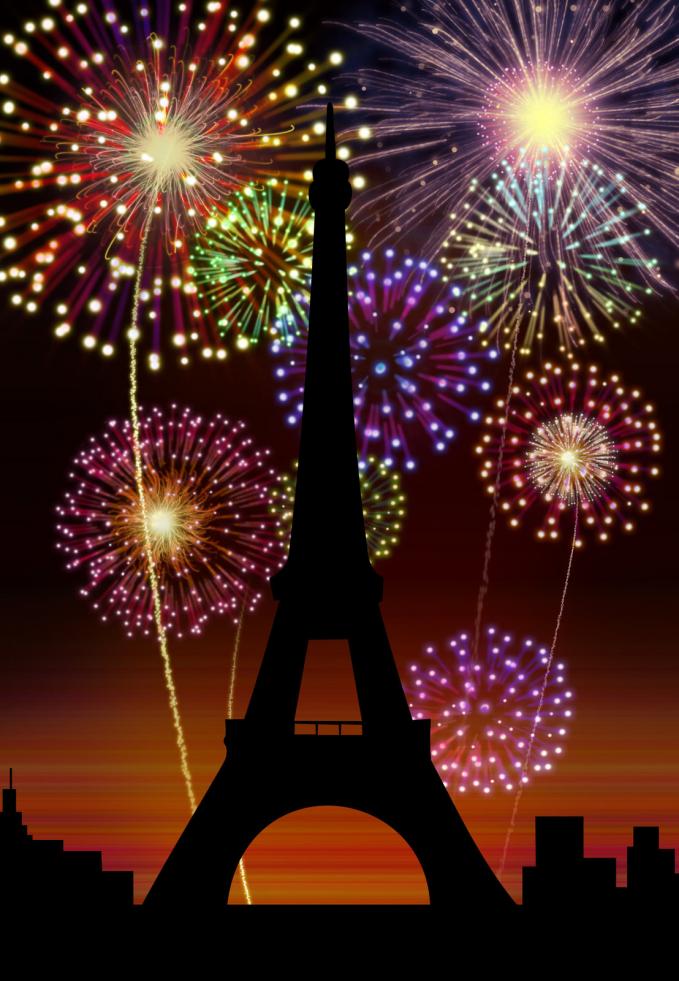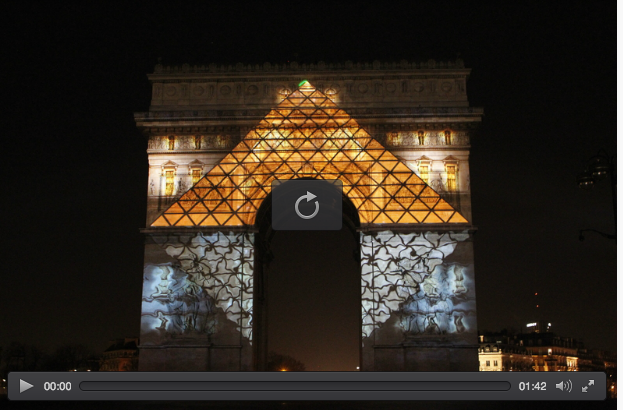Le Réveillon de la Saint-Sylvestre in France
 French Speaking Countries
French Speaking Countries
French is the second most widespread language worldwide after English, as only these two languages are spoken on all five continents.
French is an official language in 29 countries, most of which form "la francophonie", the community of French-speaking countries. French is spoken as a first language in France, southern Belgium, western Switzerland, Monaco, and the province of Quebec. It is also an official language in the province of New Brunswick, and spoken in other communities in Canada.
French is also spoken in communities in the U.S. states of Louisiana, Maine, New Hampshire and Vermont, as well as among educated classes in North Africa, Haiti, French Polynesia and in various communities elsewhere. [Wikipedia]
While particular end-of-year traditions exist in most of these countries, we'll just focus here on France.
France
In France, huge municipal firework displays were not the customary way to usher in the New Year. This has changed however in recent years, and the Eiffel Tower fireworks and light shows in Paris have become quite spectacular.
Nevertheless, French people tend to take things more quietly and celebrate with friends at home or in a restaurant. These New Year's Eve celebrations - le réveillon de la Saint-Sylvestre - traditionally are a feast that includes plenty of champagne and foie gras or oysters, symbols of prosperity and good fortune.
As in many other countries, the last day of the year in France is named after the fourth-century Catholic pope and saint. This was after the reform of the Gregorian calendar in 1582, when the last day of the year became December 31, the day of Saint Sylvestre's death in 335. [You say "la" Saint-Sylvestre because it's short for "la fête de Saint-Sylvestre."]
Paris
In Paris, the city of lights, New Year's Eve becomes a visual feast: from many vantage points in the city you can see the iconic, illuminated Eiffel Tower.
And, you'll find the biggest New Year's party on the Avenue de Champs Elysées, where hundreds of thousands of people gather to celebrate, wish each other "Bonne année" (Good year), and exchange "bises" (kisses on the cheeks) at the stroke of midnight. 
And, you'll find the biggest New Year's party on the Avenue de Champs Elysées, where hundreds of thousands of people gather to celebrate, wish each other "Bonne année" (Good year), and exchange "bises" (kisses on the cheeks) at the stroke of midnight.
In 2014, Paris added a first-time spectacle before the final countdown: a 20-minute video show projected on the Arc de Triomphe, highlighting the Parisian "art of living". This RTL clip lets you practice your French listening skills and you'll learn that not everybody was happy with the show.
lets you practice your French listening skills and you'll learn that not everybody was happy with the show.
If you click on the image on the left you can watch a YouTube clip of the 2014 light show and fireworks.
Due to the recent terror attacks, there is some question about the extent of the official New Year's celebrations in Paris this year. A Less Joyous New Year Tradition...
Even in previous years there were some clouds on the New Year horizon: In 2013, the New York Times wrote about France's Less Joyous New Year's Tradition and in 2014 France24's English site reported as France's odd New Year tradition: Counting torched cars. It noted:
"The infamous custom can be traced to the northeastern city of Strasbourg that straddles France’s border with Germany. Strasbourg, which hosts thousands of tourists who flock to the city for its renowned Christmas market, first began to be blighted by holiday season vehicle arson in the late 1980s. But the phenomenon exploded to alarming levels during the 1990s."
Le Réveillon du Nouvel An
Nevertheless, in spite of such statistics and recent events, I'd be very surprised if the French were not on the streets and celebrating le réveillon de la Saint-Sylvestre.
Update: This France24 article of December 28, 2015 confirms that the celebrations will indeed take place in Paris, although under heightened security. The Arc de triomphe light show will be reduced to 10 minutes.
On New Year's Day, it's the tradition to have a large family dinner and to give presents to the children as a way to celebrate the arrival of the new year.
The King's Cake
The New Year holiday season comes to an official end on January 5th, Epiphany, the day when it is believed that three wise men presented their gifts to the baby Jesus.
The French celebrate by making a unique kind of cake, the "Galette des rois." In many regions the "galette des rois" is a flat layer of puff pastry filled with almond cream, in other communities, e.g. in the south of France, the "gâteau des rois" is a round brioche with candied fruits and sugar, shaped like a crown.
Common to all versions of the King's Cake, is a small trinket, a plastic or porcelain figurine of the baby Jesus hidden in the cake. The one who finds it (watch out to not swallow or bite on it!) is the king for the the day (and can wear the paper crown, often sold with the cakes).
Young kids obviously love this tradition and families use various rules to ensure a fair distribution of the cake to all.
You'll find more about this tradition in King Cake and its History: From France to Mardi Gras.
